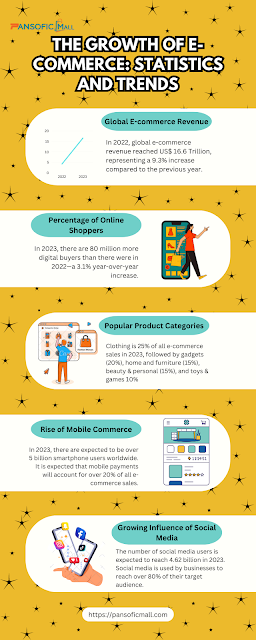"E-Commerce Online Platforms: The Backbone of Digital Retail Success in 2025"
Explore the world of e-commerce online platforms, their features, benefits, and how to choose the right one for your business. Learn from examples like Shopify, WooCommerce, and BigCommerce.
1. Introduction to E-Commerce Platforms
In the digital age, launching an online store is no longer a luxury—it's a necessity. Whether you're selling physical products, digital downloads, or services, e-commerce platforms serve as the backbone of online retail businesses. These platforms offer tools to build, manage, and scale your store with ease.
With global e-commerce sales projected to reach over $7 trillion by 2025, selecting the right platform is a strategic business decision.
2. Key Features of an Ideal E-Commerce Platform
A good e-commerce platform should offer the following features:
User-Friendly Interface
Mobile Responsiveness
Product Management System
Secure Payment Gateways
Inventory Management
SEO Tools
Marketing Integrations (Email, Social, Ads)
Analytics & Reporting
Customer Support Features
Multi-language & Currency Support
Having these core functionalities allows even non-technical users to run successful e-commerce operations.
3. Types of E-Commerce Platforms
There are three main types of e-commerce platforms:
a. Hosted Platforms (SaaS)
Examples: Shopify, BigCommerce, Dukaan
Easy to set up
Monthly subscription model
Ideal for beginners
b. Self-Hosted Platforms (Open-source)
Examples: WooCommerce, Magento, OpenCart
Requires technical know-how
Highly customizable
Ideal for developers or tech-savvy users
c. Headless Commerce Platforms
Examples: Commerce.js, Shopify Hydrogen
Backend and frontend are separated
Gives complete design freedom
Best for large brands and developers
4. Top E-Commerce Platforms in 2025
✅ Shopify
Best for: Beginners and growing businesses
Features: Drag-and-drop builder, apps, themes, 24/7 support
Example: Gymshark scaled to a global brand using Shopify
✅ WooCommerce
Best for: WordPress users and bloggers
Features: Free plugin, open-source, flexible themes
Example: Porter & York, a premium meat delivery company
✅ BigCommerce
Best for: Large-scale businesses and enterprise clients
Features: B2B functionality, multi-store support
Example: Skullcandy uses BigCommerce for international operations
✅ Magento (Adobe Commerce)
Best for: Enterprises with development teams
Features: High-level customization, advanced inventory
Example: Helly Hansen, a global sportswear brand
✅ Dukaan
Best for: Indian market and small businesses
Features: Quick store launch, local payment support
Example: Thousands of Indian kirana stores use Dukaan to go online
✅ CS-Cart Multi-Vendor
Best for: Marketplaces like Amazon or Etsy
Features: Vendor management, commission system
Example: ShopClues, an Indian marketplace started with CS-Cart
5. How to Choose the Right E-Commerce Platform
Here are some key factors to consider when choosing your platform:
a. Budget
SaaS platforms require monthly payments.
Open-source platforms need hosting and development costs.
b. Scalability
Choose a platform that grows with you—more SKUs, traffic, etc.
c. Ease of Use
Beginner-friendly platforms save time and reduce costs.
d. Customizability
Do you want to tweak everything, or use ready-made templates?
e. Support & Community
A strong support system ensures less downtime and quicker fixes.
f. Security
Ensure it complies with PCI standards and supports SSL certificates.
6. Case Studies & Real-World Examples
🌟 1. Case Study 1: Gymshark (Shopify)
Started by a teenager in his garage, Gymshark used Shopify’s easy-to-use platform to scale into a $1 billion fitness brand. Shopify’s robust ecosystem allowed rapid scaling and international sales.
🌟 Case Study 2: The Irish Store (WooCommerce)
This business sells Irish-made goods globally. WooCommerce enabled deep WordPress integration, lowering marketing costs through built-in SEO tools and content marketing.
🌟 Case Study 3: MyDeal (CS-Cart)
An Australian marketplace built on CS-Cart Multi-Vendor. With a commission model and vendor dashboard, MyDeal successfully attracted hundreds of sellers and thousands of SKUs.
7. Future Trends in E-Commerce Platforms
🔮 a. AI Integration
Chatbots, product recommendations, and smart search functions will continue to improve.
🔮 b. Headless Commerce
Gives brands more design freedom and better mobile experiences.
🔮 c. Voice Commerce
Voice assistants like Alexa and Google Assistant will be key touchpoints.
🔮 d. Augmented Reality (AR)
Customers can “try before they buy” with AR features integrated into platforms.
🔮 e. Sustainability Integrations
Carbon tracking, ethical sourcing labels, and sustainable logistics will be increasingly in demand.
8. Final Thoughts
The world of e-commerce platforms is dynamic and competitive. Whether you’re a solo entrepreneur or a large enterprise, choosing the right platform will impact your business growth, customer experience, and long-term scalability.
Invest time in researching your options. Begin with your current business model and future growth plans. Use the success stories of brands like Gymshark, Porter & York, or MyDeal to guide your path.
Remember: a great product needs an equally great platform to shine online.
Link: https://www.pansoficmall.com/



Comments
Post a Comment